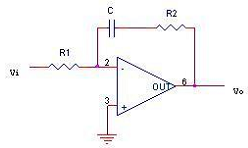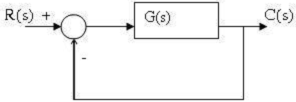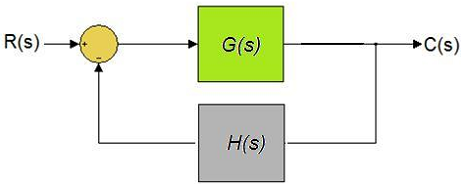Thi thử trắc nghiệm môn Lý thuyết điều khiển tự động online - Đề #2
Câu 1:
Hệ thống bất biến theo thời gian là hệ thống có:
Câu 2:
Tìm nghiệm của hệ thống có phương trình đặc tính sau: s2+ 4s + 3 = 0
Câu 3:
Hệ thống có quỹ đạo nghiệm số như hình vẽ. Số nghiệm cực của hệ thống là:
.png)
Câu 4:
Biểu đồ Bode biên độ của khâu tích phân lý tưởng G(s)=1/s
Câu 5:
Hệ SISO là hệ thống có:
Câu 6:
Số lần đổi dấu của số hạng ở cột 1 bảng Routh bằng số nghiệm:
Câu 7:
Hàm truyền đạt của hệ thống nối tiếp:
Câu 8:
DAC là:
Câu 9:
Hàm truyền của hệ thống:
Câu 10:
Hệ thống rời rạc là ổn định nếu tất cả các nghiệm của phương trình đặc tính:
Câu 11:
Hàm truyền đạt $G(s) = \frac{{{V_o}(s)}}{{{V_i}(s)}}{\cos ^{ - 1}}\theta $ của mạch điện ở hình sau là:

Câu 12:
Đặc điểm của khâu hiệu chỉnh PD (Proportional Derivative) là:
Câu 13:
Tiêu chuẩn IAE (Integral of the Absolute magnitude of the Error - tích phân trị tuyệt đối biên độ sai số ):
Câu 14:
Cho hệ thống hồi tiếp âm đơn vị sau. Sai số xác lập exl là:

Câu 15:
Cho hệ thống hồi tiếp âm đơn vị sau. Sai số xác lập exl là:

Câu 16:
Xác định hàm truyền tương đương của hệ thống nối tiếp như hình vẽ:

Câu 17:
Hàm truyền tương đương của hệ thống hồi tiếp như hình vẽ là:

Câu 18:
Cho hệ thống có cấu trúc sau:
Tìm hàm truyền tương đương của hệ thống:$H(s) = 1$$G(s) = \frac{{s + 3}}{{{s^2} + 3s + 1}}$$C(s) = \frac{3}{{5s + 1}}$
Câu 19:
Cho hệ thống có hàm truyền tương đương sau: ${G_{td}}(s) = \frac{{s + 1}}{{{s^3} + 3{s^2} + 4s + 1}}$
Câu 20:
Cho hệ thống có hàm truyền tương đương sau:
${G_{td}}(s) = \frac{{s + 1}}{{{s^3} - {s^2} + 4s + 1}}$
Xét tính ổn định của hệ thống trên:
Câu 21:
Cho hệ thống có hàm truyền tương đương sau:
${G_{td}}(s) = \frac{{s + 1}}{{{s^3} + 3{s^2} + 4s}}$Xét tính ổn định của hệ thống trên:
Câu 22:
Cho hệ thống có hàm truyền tương đương sau:
${G_{td}}(s) = \frac{{s + 1}}{{{s^3} + 3{s^2} - s + 1}}$
Xét tính ổn định của hệ thống trên:
Câu 23:
Cho hệ thống có hàm truyền tương đương sau:
Xét tính ổn định của hệ thống trên:${G_{td}}(s) = \frac{{s + 1}}{{{s^3} + {s^2} + 4s + 1}}$
Câu 24:
Cho hàm truyền $G(s) = \frac{{20}}{{{s^2} + 4s + 8}}$ , hãy lập phương trình trạng thái.
Câu 25:
Cho hàm truyền $G(s) = \frac{2}{{{s^2} + 2s + 8}}$ , hãy lập phương trình trạng thái
